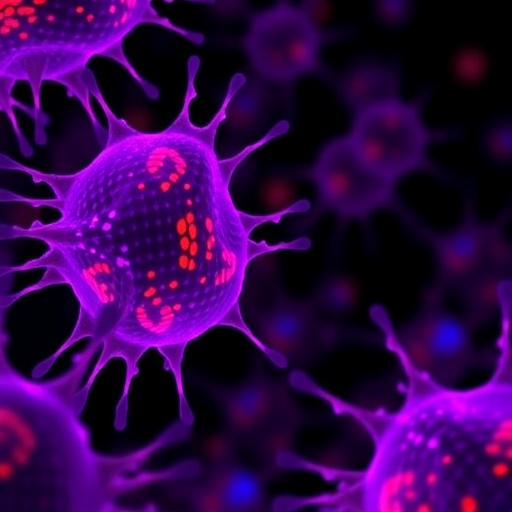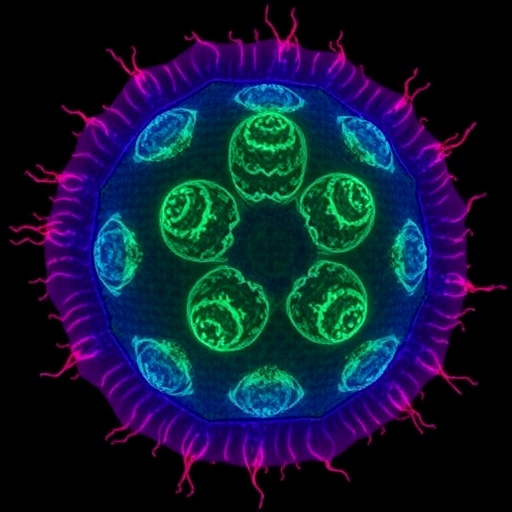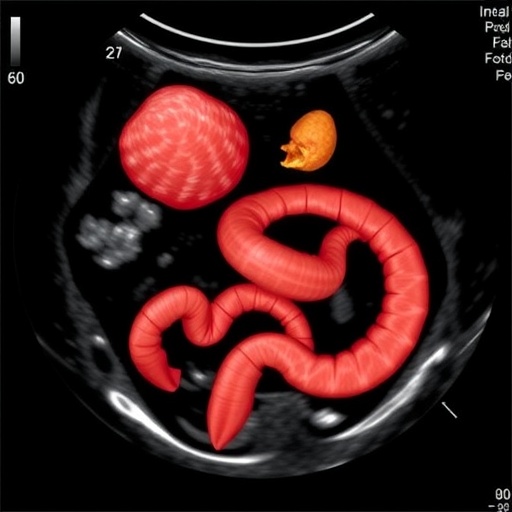PROTECT YOUR DNA WITH QUANTUM TECHNOLOGY
Orgo-Life the new way to the future Advertising by AdpathwayIn a groundbreaking development within the realm of virology and infectious disease research, a team of scientists has identified Dipeptidase 1 (DPEP1) as a functional cellular receptor for a porcine coronavirus, dramatically advancing our understanding of viral entry mechanisms in swine populations. This discovery, published in Nature Microbiology, has profound implications for controlling coronavirus infections in pigs, which have significant economic repercussions worldwide due to their impact on the livestock industry. The identification of DPEP1 as a key receptor not only unravels a previously obscure viral-host interaction but also opens new avenues for targeted antiviral therapies and vaccine development strategies.
Until now, the molecular underpinnings guiding the entry of porcine coronaviruses into host cells remained poorly understood, obstructing effective countermeasures against outbreaks. This study bridges that critical knowledge gap by elucidating the receptor-ligand dynamics that facilitate viral attachment and subsequent invasion. By pinpointing DPEP1, a membrane-bound metalloprotease involved in dipeptide metabolism, as the gateway exploited by this coronavirus, researchers have uncovered a novel viral adaptation mechanism. Notably, the exploitation of DPEP1 deviates from the canonical receptors utilized by related coronaviruses, underscoring the virus’s evolutionary ingenuity and tissue tropism.
The experimental approach employed cutting-edge molecular biology techniques, including affinity purification, receptor-blocking assays, and viral pseudotyping. These methods collectively validated the specificity and necessity of DPEP1 for viral entry. Through the expression of DPEP1 in heterologous cell systems previously non-permissive to the virus, researchers observed a dramatic enhancement in susceptibility, conclusively establishing the receptor’s functional role. Furthermore, knockout experiments corroborated these findings, with the absence of DPEP1 significantly impairing viral infectivity. These robust lines of evidence solidify DPEP1 as an indispensable mediator of infection.
At the molecular level, the interaction between the viral spike glycoprotein and DPEP1 involves high-affinity binding sites that induce conformational changes facilitating membrane fusion. Structural analyses via cryo-electron microscopy revealed that the viral spike’s receptor-binding domain engages distinct epitopes on DPEP1, delineating a binding pocket that could be exploited for therapeutic blockade. This mechanistic insight offers a template for rational drug design, potentially enabling the development of small molecules or monoclonal antibodies that competitively inhibit this critical interface, thereby preventing viral entry.
The discovery carries significant ramifications for zoonotic risk assessment and interspecies transmission potential. Porcine coronaviruses have historically posed limited threat beyond swine; however, understanding their receptor usage enhances predictive models for possible cross-species jumps. Since DPEP1 orthologs exist in several mammalian species, elucidating the receptor’s structural conservation and viral binding affinity across taxa will be vital in evaluating future pandemic risks. These findings thus extend beyond veterinary medicine and impact public health strategies.
Importantly, the study adds a vital piece to the broader coronavirus puzzle, contributing to the comparative virology field focused on receptor diversity and viral evolution. Coronaviruses have showcased remarkable adaptability in receptor engagement, ranging from angiotensin-converting enzyme 2 (ACE2) in SARS-CoV-2 to aminopeptidase N (APN) in other alphacoronaviruses. The identification of DPEP1 as a receptor enriches this narrative, highlighting the evolutionary plasticity of viral entry mechanisms. This knowledge may inform surveillance programs aiming to detect emergent coronaviruses with receptor alterations indicative of enhanced infectivity or virulence.
From the standpoint of agricultural biosecurity, these insights are invaluable. Vaccines that elicit immune responses blocking the spike-DPEP1 interaction have promising potential in curtailing outbreaks among pig herds. Moreover, genetic screening for DPEP1 variants with altered viral binding affinities might inform selective breeding programs aimed at enhancing resistance within livestock populations. This multidisciplinary application underscores the translational impact of fundamental receptor biology in mitigating economic losses caused by infectious diseases.
While therapeutic exploitation of this receptor-virus interface is promising, challenges remain. The physiological role of DPEP1 in normal cellular metabolism necessitates caution to avoid deleterious off-target effects when designing receptor inhibitors. Additionally, the virus’s reliance on DPEP1 could exert selection pressure favoring spike protein mutations that circumvent receptor blockade, necessitating vigilance in therapeutic development. These complexities underscore the need for integrated approaches combining molecular, immunological, and evolutionary perspectives.
The research also stimulates curiosity about the viral lifecycle beyond entry, particularly regarding how engagement with DPEP1 may influence intracellular trafficking and immune evasion. The receptor’s enzymatic activity and localization in specific tissues might impact viral dissemination or pathogenesis within the host. Future studies dissecting these downstream effects are critical for a comprehensive understanding of viral-host interplay.
Beyond pigs, this receptor discovery raises intriguing questions about the broader functional repertoire of metalloproteases like DPEP1 in viral infections. The possibility that other viruses might exploit similar mechanisms invites comparative analyses across viral families. Such cross-disciplinary investigations can illuminate general principles of viral adaptation and inform broad-spectrum antiviral strategies.
The structural remodeling of the viral spike to accommodate DPEP1 binding reflects the dynamic relationship between virus and host. Evolutionary pressure to optimize receptor engagement likely drives glycoprotein sequence variability, influencing antigenicity and vaccine design. Continuous monitoring of viral genetic drift in the spike region is thus essential to maintain effective immunization programs.
Overall, the identification of Dipeptidase 1 as a functional receptor for a porcine coronavirus represents a significant leap forward in our understanding of coronavirus biology, host specificity, and infection mechanisms. This pivotal discovery not only advances fundamental science but also heralds new opportunities for controlling a pathogen with substantial agricultural impact. As coronavirus research occupies center stage globally, insights such as these enrich the collective arsenal against a diverse and evolving family of viruses.
In conclusion, this landmark study exemplifies the synergy between structural biology, molecular virology, and translational research. It highlights the necessity of unraveling virus-host interactions in intricate detail to foster innovation in disease mitigation. The path ahead involves leveraging this knowledge to design targeted interventions that can safeguard animal health, bolster food security, and potentially preempt zoonotic spillover events. Such endeavors will undoubtedly shape the future landscape of infectious disease research and management.
Subject of Research: Identification of Dipeptidase 1 (DPEP1) as a functional receptor mediating entry of a porcine coronavirus into host cells.
Article Title: Dipeptidase 1 is a functional receptor for a porcine coronavirus.
Article References:
Dufloo, J., Fernández, I., Arbabian, A. et al. Dipeptidase 1 is a functional receptor for a porcine coronavirus. Nat Microbiol (2025). https://doi.org/10.1038/s41564-025-02111-7
Image Credits: AI Generated
Tags: antiviral therapies for pigscoronavirus infections in livestockDipeptidase 1 receptoreconomic impact of porcine coronavirusesmolecular biology techniques in virologyNature Microbiology publication on coronavirusesnovel viral adaptationsporcine coronavirus entry mechanismsreceptor-ligand dynamics in virusesswine population health researchvaccine development strategies for coronavirusesviral-host interactions in swine


 7 hours ago
5
7 hours ago
5





















 English (US) ·
English (US) ·  French (CA) ·
French (CA) ·